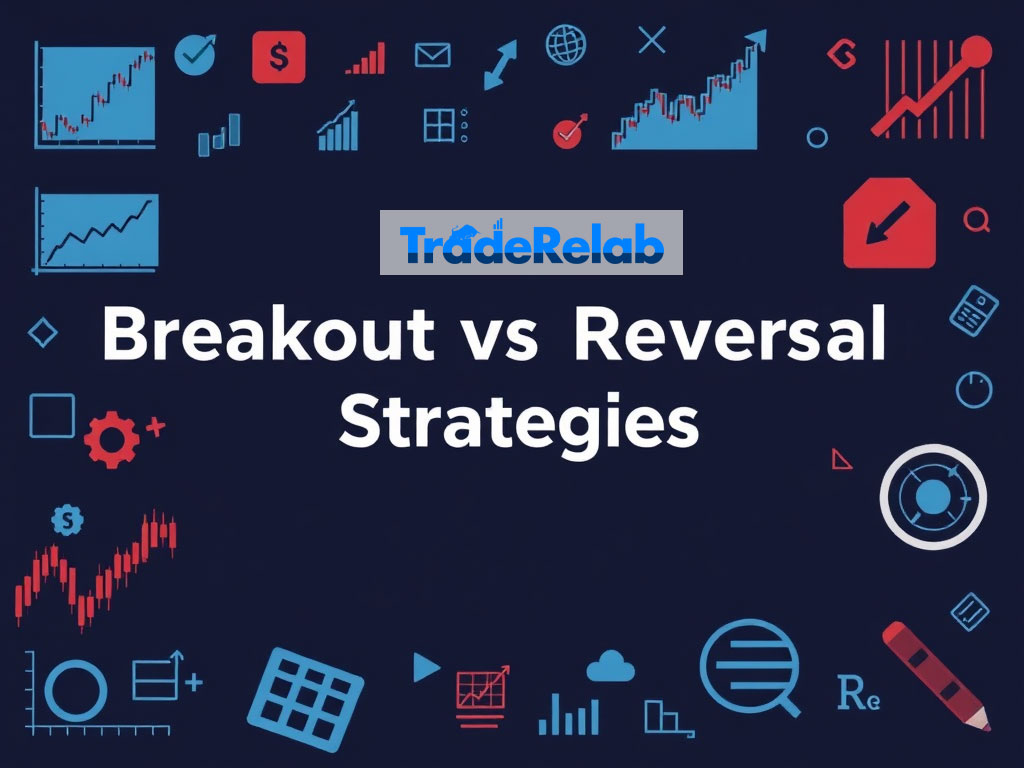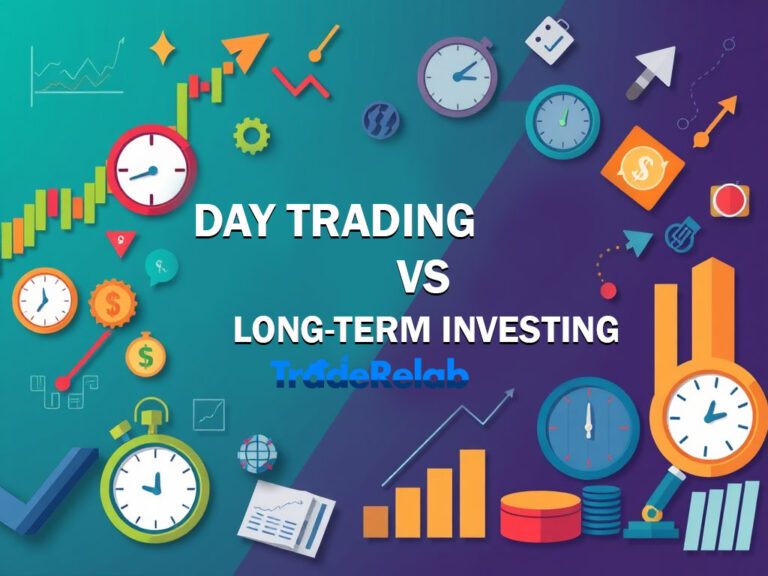Breakout vs Reversal Strategies: Which One Works Best?

In the world of trading, one of the most important decisions traders face is choosing the right strategy. Two of the most popular strategies for identifying profitable trades are breakout and reversal strategies. While both methods aim to profit from price movements in the market, they work in fundamentally different ways and require distinct approaches to execution. But the question remains: which one works best? In this article, we will compare breakout and reversal strategies, discussing how they function, their advantages and disadvantages, and how to decide which one suits your trading style.

What is a Breakout Strategy?
A breakout strategy is based on the idea that when an asset breaks through a significant level of support or resistance, it often continues in the direction of the breakout. Traders using this strategy look for price levels where the market has been “trapped” within a narrow range (a consolidation period) and expect a breakout to occur once the price moves beyond a key level.
Key Features of Breakout Strategy:
- Focuses on Momentum: Traders aim to capture the price movement that follows a breakout. Once the asset breaks through key levels, it is expected to continue moving in that direction.
- Significant Levels: Breakouts typically occur at support and resistance levels, trendlines, or chart patterns (such as triangles or flags).
- Volume Confirmation: Breakouts are often validated by a significant increase in trading volume. High volume indicates that the breakout is more likely to sustain its momentum.
How to Trade a Breakout:
- Identify the Consolidation Area: Look for periods where the asset is trading within a narrow range, forming a triangle or rectangle pattern.
- Set Key Levels: Determine the level of support or resistance that needs to be broken.
- Enter the Trade: Once the price breaks above resistance (for a bullish breakout) or below support (for a bearish breakout), traders enter the position.
- Confirm the Breakout: Watch for an increase in volume to confirm the breakout’s legitimacy.
- Set Stop-Loss: A stop-loss is usually placed just below the breakout point (for long positions) or just above (for short positions) to limit risk.
What is a Reversal Strategy?
A reversal strategy aims to profit from price changes when an asset moves against the prevailing trend. Unlike breakouts, where traders look to capture momentum, reversal traders seek to identify when the price has reached an overbought or oversold condition, and anticipate that it will reverse direction.
Key Features of Reversal Strategy:
- Focuses on Turning Points: Traders aim to catch the “turn” in the market, profiting from price movements when they believe a trend is about to change direction.
- Indicators and Patterns: Reversal traders often use technical indicators (such as RSI or MACD) or chart patterns (such as double tops or bottoms, head and shoulders) to identify potential reversal points.
- Risk and Reward: Since reversals often happen at extreme price points, these trades tend to have higher potential rewards, but also higher risk due to market unpredictability.
How to Trade a Reversal:
- Identify Overbought/Oversold Conditions: Use indicators like RSI, Stochastic, or MACD to find when an asset is overbought or oversold.
- Spot Reversal Patterns: Look for chart patterns such as head and shoulders, double tops or bottoms, or candlestick formations like doji or engulfing patterns.
- Confirm the Reversal: Wait for confirmation signals such as trendline breaks or additional technical indicators indicating the reversal is likely.
- Enter the Trade: Once you have confirmation, enter the trade in the direction of the reversal.
- Set Stop-Loss: A stop-loss is often placed beyond the recent high or low, depending on the direction of the reversal, to protect against false signals.
Advantages and Disadvantages of Breakout Strategies
Advantages:
- Trend Continuation: Breakouts allow traders to capture the initial momentum of a new trend, which can result in significant profits if the breakout leads to a strong price move.
- Clear Entry Points: Breakouts offer clear and defined entry points when the price breaks through support or resistance.
- Works Well in Trending Markets: Breakouts work best when the market is trending strongly in one direction, as the momentum can lead to big price moves.
Disadvantages:
- False Breakouts: One of the risks of breakout trading is the occurrence of false breakouts, where the price breaks the key level briefly but then reverses, leading to losses.
- Requires Quick Execution: Breakouts often happen quickly, and waiting for confirmation may result in missing the entry point.
- Requires Strong Volume: Without sufficient volume, a breakout may not be sustainable, which can lead to choppy price action and losses.
Advantages and Disadvantages of Reversal Strategies
Advantages:
- Potential for High Reward: Reversal trades tend to offer high reward-to-risk ratios since the trader is entering at potential turning points.
- Works Well in Range-Bound Markets: Reversal strategies can be particularly useful in markets that are not trending but are moving within well-defined ranges.
- Multiple Entry Points: Reversal traders often have multiple entry signals, from indicators to chart patterns, offering flexibility in choosing trade entries.
Disadvantages:
- High Risk: Reversal strategies can be riskier because you are betting against the prevailing trend, which can be a difficult market to predict.
- False Reversals: Markets often experience short-term retracements that look like reversals but are simply temporary price movements before the trend continues.
- Requires Patience: Reversal trading requires patience, as traders need to wait for confirmation that the trend has indeed reversed, which can take time.

Breakout vs Reversal: Which One Works Best?
The answer to whether breakout or reversal strategies work best depends on a number of factors, including market conditions, the trader’s style, and risk tolerance.
When to Use Breakout Strategies:
- Trending Markets: Breakout strategies tend to work best in strong trending markets, where prices are consistently moving in one direction.
- Momentum: If you believe that a breakout will lead to a new trend or continuation of an existing trend, a breakout strategy can be more effective.
- Clear Levels of Support and Resistance: Breakout strategies work well when you can clearly identify significant levels of support or resistance in the market.
When to Use Reversal Strategies:
- Range-Bound Markets: Reversal strategies tend to work best in markets that are consolidating or moving in a sideways direction. If the market is stuck between key levels, reversals are more likely.
- Overbought/Oversold Conditions: If an asset has reached an overbought or oversold level, it may be due for a reversal.
- High Volatility: In highly volatile markets, reversals can present opportunities, as price extremes may trigger turning points.
Which Strategy is Right for You?
The best strategy depends on your personal trading style and risk tolerance. Some traders may prefer the momentum and excitement of breakouts, while others may find that reversal strategies suit their patient, more conservative style.
- Breakout trading may be ideal for traders who thrive in fast-moving markets, enjoy taking advantage of trends, and can act quickly when opportunities arise.
- Reversal trading may suit traders who are more risk-averse, prefer to trade in range-bound markets, and are willing to wait for clear signs of trend reversals.
It’s also possible to use a combination of both strategies, depending on market conditions. For instance, in a trending market, you could focus on breakout trades, but during periods of consolidation, you might switch to a reversal strategy.
Conclusion
Both breakout and reversal strategies have their strengths and weaknesses, and neither is inherently superior to the other. The key to success in trading lies in choosing the right strategy for the market conditions, using the appropriate tools, and managing risk effectively. Understanding when and how to apply each strategy will enhance your ability to make profitable trades and avoid unnecessary losses.
Ultimately, the best strategy for you will depend on your trading goals, risk tolerance, and preferred market conditions. By experimenting with both approaches and refining your skills, you can determine which strategy works best for your trading style.
FAQ
1. What is the main difference between breakout and reversal strategies?
The main difference is that breakout strategies seek to capitalize on momentum following a price breakout from key levels, while reversal strategies aim to profit from price changes when the market reverses direction.
2. Which strategy works better in trending markets?
Breakout strategies tend to work better in trending markets, as they capitalize on momentum and the continuation of trends.
3. Are reversal strategies more risky than breakout strategies?
Yes, reversal strategies can be riskier because traders are betting against the prevailing trend. False signals and sudden price movements can lead to significant losses.
4. How do I identify a breakout?
Breakouts are identified when the price moves above resistance (for bullish breakouts) or below support (for bearish breakouts) with increased volume and strong momentum.
5. Can I use both breakout and reversal strategies?
Yes, many traders use both strategies, depending on the market conditions. For example, breakouts can be used in trending markets, while reversals can be more effective in range-bound markets.






